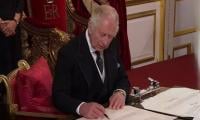LAHORE: The PTI government during a short span of two years has brought in the third gentleman to head the Ministry of Health, as health regulation and management continued to decline.
There is no doubt that health management system in Pakistan is in shambles. Government hospitals are dysfunctional for the poor, but provide state of the art services to top bureaucrats, government functionaries at highly subsidised rates.
Private hospitals are out of reach of poor and charge exorbitantly from the affluent, though they mostly lack the state of the art equipment installed in government hospitals (for VIP patients only).
Again the testing laboratories in government hospitals are not considered trust worthy while the charges at private laboratories are extremely high. Impatience with its health experts shows government’s concern to streamline health issues. Health spending is a major expense in household budgets.
All governments, including the incumbents strive to ensure availability of quality medicines at lowest possible rates – again it is a noble cause.
The first Health Minister, Amir Mehmood Kiyani was removed after he allowed a formula based increase in medicine rates (although officially it was done by the Drug Regularity Authority of Pakistan).
He was replaced by Dr Zafar Mirza, who earned the wrath of his seniors for allowing import of essential drugs from India. The price issue remained unresolved to the liking of the government, because the guidelines provided by the Supreme Court asked for fair pricing policy based on commercial viability and patient’s welfare (meaning minimum commercially viable price that ensures smooth supply of the drugs in the market).
Now the new Special Assistant to the Prime Minister on Heath, Shaukat Sultan has been inducted. He is an excellent professional. Let us hope he does not concentrate solely on drug prices, but regulates the entire health sector to bring meaningful relief to the patients.
There is a need to analyse the total expenses that a patient bears for the cure of any ailment. It would be news for some that drug expenses have the lowest share in the treatment cost of common patients.
Though latest data is not available, the Pakistan Bureau of Statistics in January 2015 revealed that as far as outpatients were concerned, around 59 percent of their cost goes to the doctors as clinic fee (mostly MBBS), 30 percent is spent on medical tests, and 11 percent on medicines.
The analysis does not include the private practice of specialists and their extremely high operation charges. It also does not include the daily room charges of private hospitals that are equivalent or higher than five star hotels.
As far as laboratory charges are concerned, one can go back to start of dengue during Shahbaz regime in Punjab. Laboratory charges for dengue test at that time were around Rs900/test.
Punjab government after evaluating the actual cost of test ordered that no laboratory would charge more than Rs90 for the dengue test. Government ensured that no laboratory dared to charge more.
Even Shaukat Khanum Laboratory despite protest had to charge the same fee. That provided great relief to the dengue patients. Most of the laboratories conducted this test on no profit basis, but still without loss.
Now look at the difference between the original price and the government controlled price. It gives an idea of the profits that these laboratories earn on tests. Now low cost machines are available in the market that could conduct multiple tests from the blood sample.
These machines have been installed by many MBBS private practitioners, who charge as exorbitant a price as that charged by big laboratories. This is where the government should intervene.
Testing at doctors clinic should be discouraged and maximum rate of each test should be fixed. In the last two decades, doctors’ fee and laboratory test charges have multiplied without any regulation from health authorities. The prices of drugs were strictly regulated by the DRAP.
Many drugs went out of market as the manufacturers (both domestic and multinational firms) stopped producing medicines making of which was not commercially viable. Patients either suffer or buy those drugs at two to three times the official rates from outlets that import or smuggle the same medicine. Most patients who could not afford go without taking medicine.
Now look at the plight of a patient who has spent 89 percent of the treatment expenses (59 percent doctors fee and 30 percent testing charges); after which he/she was prescribed the drug for the treatment of his ailment; what should he/she do if the medicine is not available because of price issues. Would it not be prudent to regulate the entire health system prudently and make space for increase in medicines rates?
The image shows a poster of Syngenta Pakistan's 'CropWise Grower' mobile application. — Syngenta...
The undated image shows the name of the Bank of Punjab written on one its branches. — APP FileKARACHI: The Bank of...
ABHI, a financial technology company, partners with Soorty Enterprises. — Facebook/ProPakistaniKARACHI: ABHI, a...
This representational image shows Gold bars. — AFP/FileKARACHI: Gold prices in the local market dropped by Rs1,600...
A currency exchange dealer counting $100 bills. — AFP/FileAs any old-school currencies trader will tell you: buy...
A Pakistan International Airline aircraft takes off in this undated picture. — Radio Pakistan/FileLAHORE: We have...







